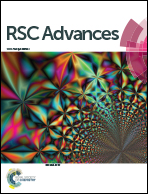Effects of calcination and reduction temperature on the properties of Ni-P/SiO2 and Ni-P/Al2O3 and their hydrodenitrogenation performance†
Abstract
A series of SiO2-supported and γ-Al2O3-supported nickel phosphides were prepared by temperature-programmed reduction (TPR) with different calcination and reduction temperatures. The prepared catalysts were characterized by XRD, BET, H2-TPR, CO titration and HRTEM. The crystal phase and CO uptake content were influenced by calcination and reduction temperature. The catalytic performance of various catalysts was tested in quinoline hydrodenitrogenation and exhibited considerable differences. The quinoline HDN activity of SiO2-supported nickel phosphides decreases with increase of calcination and reduction temperature. In contrast to SiO2-supported samples, the ability to remove nitrogen of γ-Al2O3-supported samples increases with reduction temperature.



 Please wait while we load your content...
Please wait while we load your content...